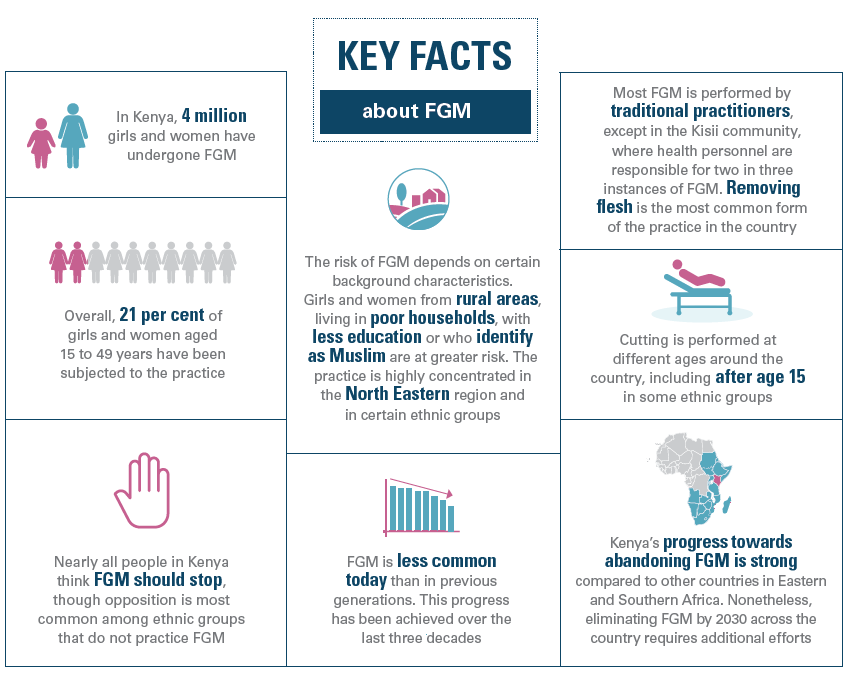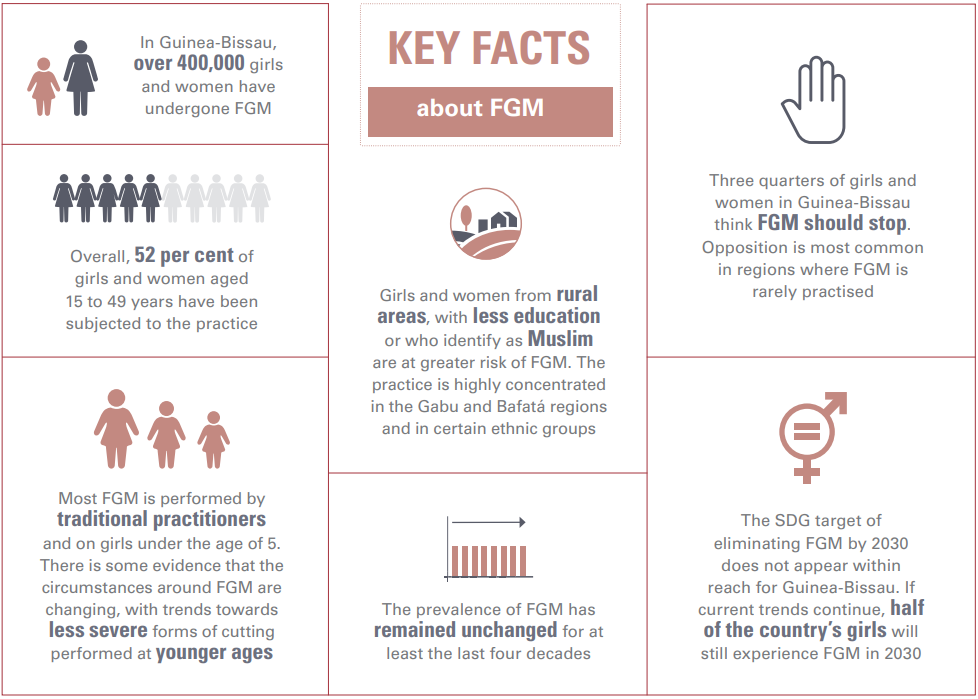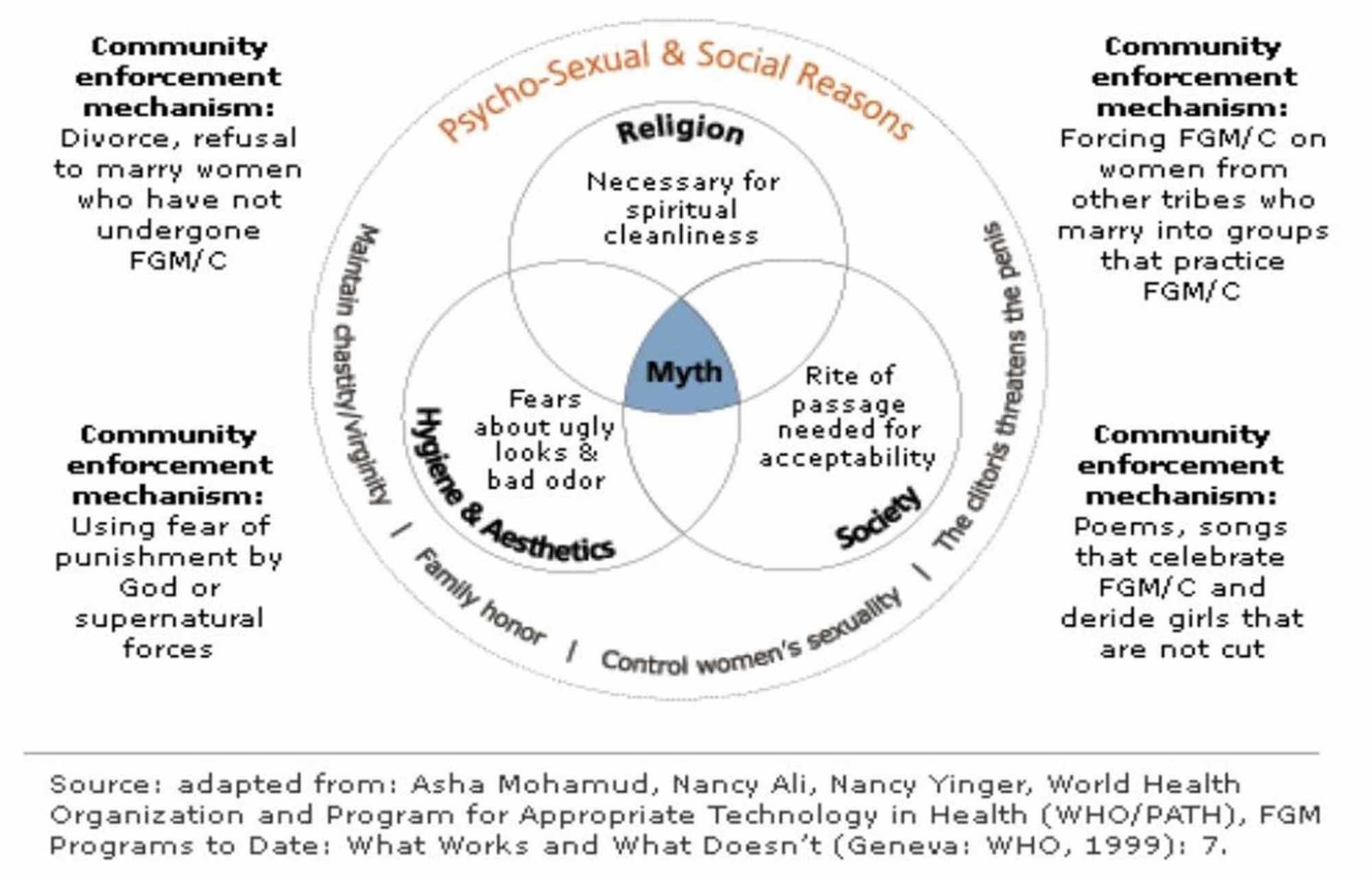FGM: A DARK SIDE OF THE SOCIETY
Relevance:
G.S paper I: Society and social Issues
Sociology: Paper II:
–Emerging issues: ageing, sex ratios, child and infant mortality, reproductive health.
Challenges of Social Transformation:
–Violence against women.

Context:

Female Genital Mutilation is an apposite example of inhumanity.
Female Genital Mutilation is a practice which is hidden behind many unethical morals which makes people think that it is going to save their dignity.
Every year, February 6 is observed as the International Day of Zero Tolerance for Female Genital Mutilation (FGM). As per the World Health Organization (WHO), globally, over 200 million girls alive today have suffered FGM in over 30 countries.

Detailed Analysis
- Female Genital Mutilation is a procedure performed especially by as cultural rite that typically includes the total or partial excision of female external genital especially clitoris and labia.
- According to the World Health Organisation, Female Genital Mutilation is defined as, “all procedures involving partial or total removal of the external female genitalia or injury to the female genital organs for non – medical reasons.”
- It is a ritual practice in over 27 countries in the continent of Africa and in some parts of Asia, Malaysia, and Indonesia. In history, it was performed in South – Saharan Africa, Arab societies, Romans which was performed in their own respective styles.
- The practice is usually carried out by a traditional circumciser or a person who is experienced in doing the mutilation in a traditional way and non-medical setting.
- The entire procedure of FGM, it would be expressed or explained to you in detail, it could lead you to pass out or give you a frisson. This procedure is followed, professed by snollygoster people.

With reference to WHO, there are more than 140 million girls and women globally that experienced or undergone these procedures. There are 3 million and more girls at risk of undergoing this heinous procedure every year, particularly in Africa.
Types of FGM
WHO classifies four types of FGM:
- type 1 (partial or total removal of the clitoral glans);
- type 2 (partial or total removal of the external and visible parts of the clitoris and the inner folds of the vulva);
- type 3 (infibulation, or narrowing of the vaginal opening through the creation of a covering seal),
- type 4 (picking, piercing, incising, scraping and cauterising the genital area).
- According to researchers and doctors, it has proven that even the least severe form of genital mutilation leads to complications during birth and puts the victim at risk of other health complications too.
- This study also showed that the practice of FGM favoured by social acceptance too.
- The practice is considered to be an honour and earns the family respect. There are also some myths like it, increases the girl’s chances of getting married or cleanse a girl from impure thoughts and desire.
- There are some social believes too that genital mutilation controls sexual promiscuity, protects the girl from potential seducers and rapists and also preserves her virginity (Woldmicael, 2009).

FGM has short term and long-term ill effects

- FGM has short term and long-term ill effects on the health and psychological well-being of the victims.
- The severity of the cutting/mutilation directly corresponds to the harm suffered.
- Since anaesthesia is rarely used on the victim during the procedure, there is extreme pain.
- The other short-term health risks are excessive bleeding, swelling and inflammation in the genital area, infection, urinary problems and in some extreme cases, even death.
- The long-term consequences include chronic genital infections, recurring urinary tract infection, painful sexual intercourse, complication during pregnancy, labour and delivery of the child, prenatal risks and debilitating psychological consequences like post-traumatic stress disorder (PTSD) and depression.
- FGM unlike male circumcision does not have beneficial health effects.
Violation of Rights:
- Due to the nature of FGM, in which brutally the very organ of human that reproduces and give life to a new future generation are mutilated and therefore, it is a violation of the human rights of women and children, in infringes on the right to life and physical integrity, the right to health and the right to freedom from torture, cruel and unusual treatment, and violence.
- Since FGM is practised mostly on minor girls who are below the age of 18 years, it is also a violation of rights enshrined in the United Nations Convention on the Rights of the Child, 1989 (UNCRC) and violates the guarantee of non-discrimination.
Sexual desire and taboo
- Since a very long time, the sexual desire has been viewed in a way that it needs to be protected and therefore people think that circumcise their daughter is important and is totally correct.
- It had been many times argued that it has a positive impact on the health of the victim avoiding certain kind of infection.
- But in the shadow of their dignity what they forget is that in FGM not only violates the right to life and dignity but also a clear violates the right to non- discrimination based on sex.
- The object and purpose and impact on male and female circumcision are different and result in causes of gross discrimination against women.
Female Genital Mutilation in India
According to the aforementioned study, the reasons for FGM referred to as “Khafd” in India include continuing an old traditional practice, adhering to religious edicts, controlling women’s sexuality and abiding by the rules stated by the religious clergy.
It also states that the issue first rose to prominence in India because of two international legal cases on FGM against practising Bohras in Australia and the US.
In 2018, a bench of then Chief Justice of India Dipak Misra, and Justices AM Khanwilkar and DY Chandrachud referred a petition seeking a ban on FGM among Dawoodi Bohra girls to a five-judge Constitution Bench. This PIL was filed byDelhi-based lawyer Sunita Tiwari, who sought a declaration that the practice amounts to a violation of a woman’s right to life and dignity.
The Dawoodi Bohra community, on the other hand, maintained that the practice should be allowed since the Constitution grants religious freedom under Article 25.
Conclusion
In the end, relinquishment of this practice must be rooted in the communities which practice it. It is important to know that this inhumane practice is deeply entrenched in culture and as a consequence, despite many laws that may outlaw it, there it is still practised. The only effective way to stop this is to aware and educate people as FGM is somewhere is an outcome of illiteracy, myths and unawareness of people. There is a necessity for “collective abandonment” in which an entire community chooses to no longer engage in FGM.

